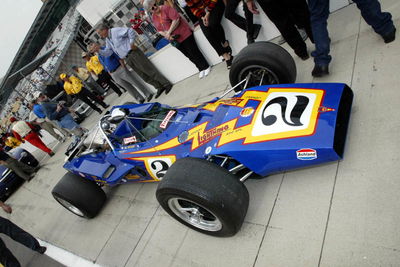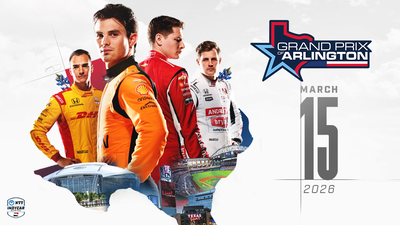Legends recall last Infineon race.
When Al Unser and Johnny Rutherford start talking racing, especially about their competitive heyday, the banter is quick, often comical and always educational. You'd expect as much from legendary drivers who have seven Indianapolis 500 victories between them and who now serve as Indy Racing League consultants.

When Al Unser and Johnny Rutherford start talking racing, especially about their competitive heyday, the banter is quick, often comical and always educational. You'd expect as much from legendary drivers who have seven Indianapolis 500 victories between them and who now serve as Indy Racing League consultants.
Broach the subject of the USAC Indy 150 (also called the Golden State 150 and the USAC Sears Point 150), the first and only major open-wheel racing event at Infineon Raceway (formerly Sears Point) on April 4th 1970, and memories flow through the conversation like a storm-swollen river. And the barbs are ever-present.
Both were part of a stellar field that included 1969 Indianapolis 500 champion Mario Andretti, who started alongside pole winner Mark Donohue; Dick Simon, who started 13th and finished sixth; Gordon Johncock, who qualified eighth and finished fourth; Bobby Unser (finished 18th); Bill Vukovich (20th); Gary Bettenhausen (21st); and Jerry Grant (22nd). Donohue didn't make it through the race and finished dead last (25th).
Everyone was left in the road dust of Dan Gurney, who started third on the grid in his final open-wheel race. Andretti was runner-up. The next month, the track closed for a year and USAC did not return when it reopened.
"The car I drove was a '67 Gurney Eagle that we put a wedge-type body on," said Rutherford, who started ninth and finished fifth in the race. "Mike Devin was my crew chief and Pat Patrick was the owner of the team in 1970.
"Al and I ran for the pole position at the (Indianapolis Motor) Speedway. We were a sleeper because we had this old car and Al had this state-of-the-art car, which was the Johnny Lightning car. We came very close - one-1,0000ths mile of an hour. They said if we started our runs together at the start-finish line and gone the four laps and ended at the start-finish line, Al would have been 2 1/2 feet ahead of me. It was the closest run for the pole position in the history of the Speedway.
"That's the same car I drove at Sears Point, and Al was in the Johnny Lightning car. Al was the consummate road racer and I was the old sprint car hard head who charged the corners too hard. We had a good time. The area is beautiful, and I understand that with all the improvements that (Speedway Motorsports Inc. chairman) Bruton Smith has done the facility is really something."
Unser, who qualified fourth and finished third in the race, visited the natural terrain track in April when IndyCar Series teams conducted an open test in preparation for this weekend's Argent Mortgage Indy Grand Prix, the first pukka road course event in series history and the first major open-wheel race at the facility since 1970. He will be the grand marshal of the event.
"It's a very competitive racetrack," said Unser, who the next month won the first of his four Indianapolis 500s and also won the 1970 USAC national championship. "It's like any; you have to get your car working. We made some changes we shouldn't have made for race day, and all it takes is just a little bit and you get off. We couldn't outrun Gurney or Mario.
"It was one of those days; I should have but I didn't and Gurney says he should have and he did. That's a course that is very demanding on you and your car. You have to make it handle well. All the ups and downs and the different types of corners; it's a demanding place."
Rutherford, who didn't attend the open test, concurred.
"The intensity is the same anywhere you go," he said. "You have to really concentrate and get into learning the course. There are many different ways around a racetrack like that, and you have to find the one that fits you and your car."
Gurney's victory came in a car of his own design, the Eagle-Gurney, with Ford power. Andretti also had Ford power in his McNamara and neither was turbo-charged like the power plants run by most of the other road-course winners in the 1970 season. He also won the Belgian Grand Prix that year in a car that his All American Racers produced. Gurney retired from open-wheel racing in 1970, but his All American Eagle was the most successful Indy-style car of the '70s.
"In the end, I had the respect of my peers and I think that is most important," he said.










